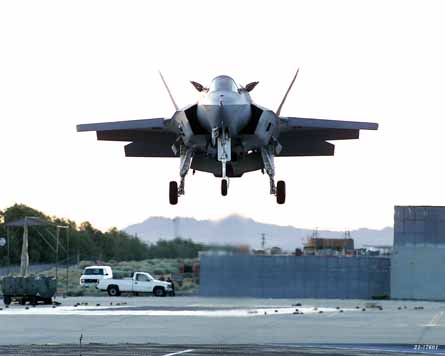Lockheed Martin redesigned the lift-fan inlet on the F-35B with an aft-hinged door after problems with the bifold doors on the X-35 concept demonstrator...
Lockheed Martin redesigned the lift-fan inlet on the F-35B with an aft-hinged door after problems with the bifold doors on the X-35 concept demonstrator. To check airflow around the open door and into the inlet in the hover, the F135 test engine was fitted with a mock-up of the upper fuselage.
"The bifold doors did not work well with forward speed," says Rob Burns, propulsion director with the Joint Strike Fighter programme office. "But the door only opens to 65° and, with no forward speed and air coming from behind the door, we needed to see if the flow would remain clean."
Bill Gostic, P&W vice-president, F135 programmes, says: "We had built computational fluid dynamics models to predict the performance, but decided we needed to build a mock-up of the inlet area with the door 65° up to validate the CFD in the hover.
"We tested two inlets, one predicted to be better than the other. The tests were encouraging, performing better than the CFD model. The lift fan stall margin was better than predicted."
P&W plans crosswind testing of the STOVL propulsion system with the mock-up inlet and door in place using another F135 engine.
"We need to make sure there is no restriction on wind direction when coming back on deck," says Burns, adding that "we will try not to stall the lift fan as hard".
|
|---|
Bifold problems led to new design for F-35B's lift-fan inlet |
Source: Flight International

















